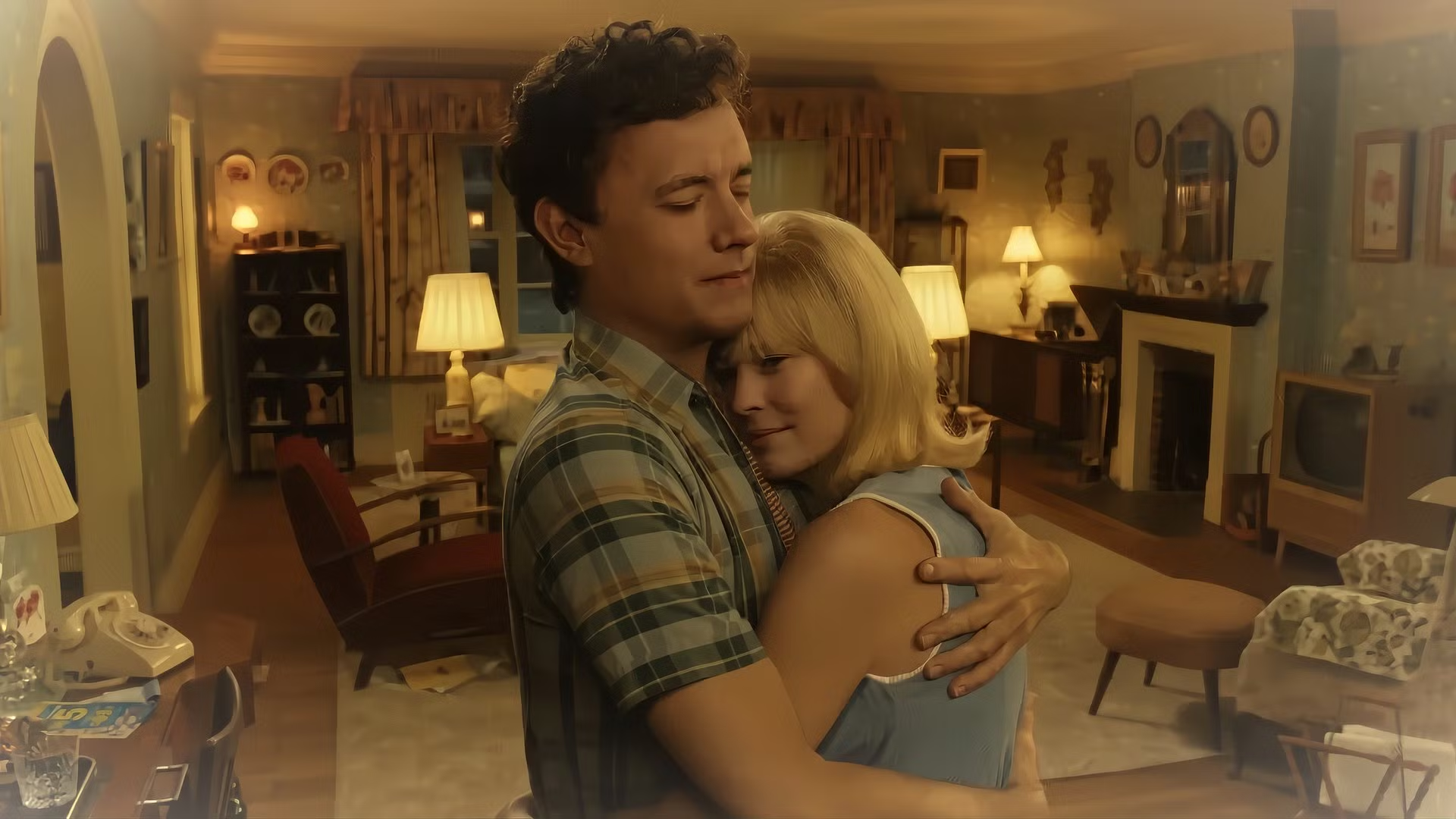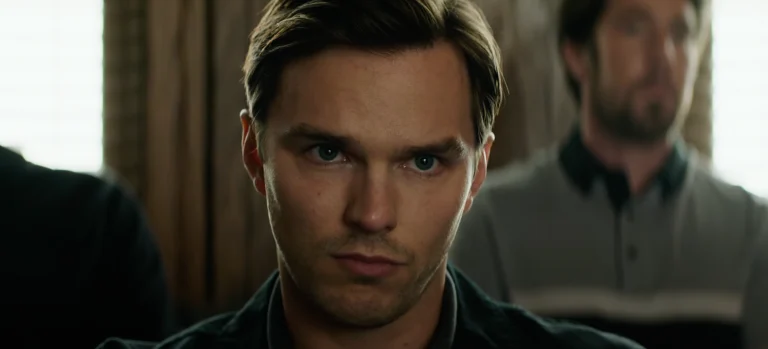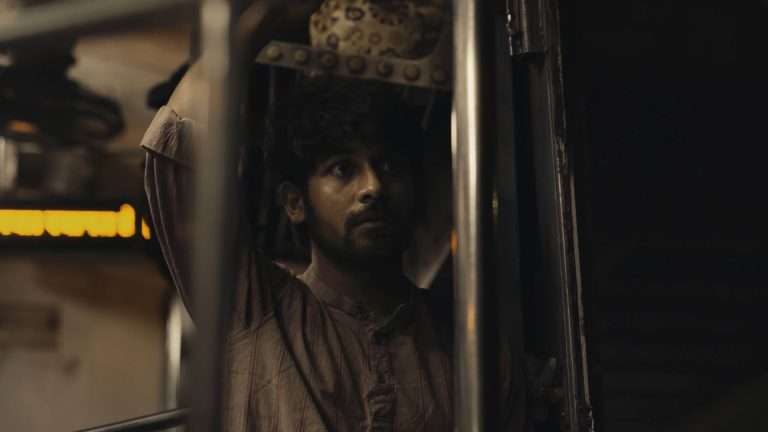They say that time flies, but memories last forever, and perhaps no filmmaker alive today seems more desperate in their plea for you to remember the good times than Robert Zemeckis. Maybe that’s why his latest tech trek “Here” finds him reuniting with the dream team that made “Forrest Gump” such a lasting—for better or worse—piece of cinema history. From his pair of leading stars down to the film’s screenwriter, to his own depleting sense of filmic wonder, Zemeckis has ensured that everyone has been reassembled to go down with the ship.
Like if Terrence Malick had dropped his scribbled “Tree of Life” notes in his favorite kombucha cafe, only for it to be claimed by a failed theater kid who found his solace in a wall poster of Elon Musk, “Here” attempts to cover the entire expanse of what it means to be human—to live, to love, to lose—all within the confines of a single space; time may fly, but the angle stays the same. This is meant both metaphorically—in terms of Zemeckis’s and Eric Roth’s inability to expand upon whatever unifying themes their eons-long journey is meant to encapsulate—as well as directly, for the entire conceit (gimmick) of “Here” is the fact that Zemeckis has chosen to depict this corner of the world from the restrictions of a single, literally static corner.
That stasis of form is, naturally, meant to exist with some sort of poetic irony, as “Here” tracks the fluidity that its small slice of New England land is meant to represent throughout the millennia; from the massive footprints of the dinosaurs to the untouched trails of the Indigenous lands, to the muddy tracks of a pre-independence USA, all the way through to the clean carpeting of a 21st-century living room, this one cozy space is intended to summarize all of human existence without ever once shifting the camera… in theory, at least.

Though Zemeckis pretends to give equal weight to all of these timelines—most of them mere excuses to cut to something else in the (failed) hopes that the film doesn’t feel entirely static in pacing as well as production design— ”Here” clearly harbors the most interest in the family that occupies this house over the course of the 20th century. Beginning with the wartime era baby boomers (Kelly Reilly and Paul Bettany, who seems to be subtly changing his accent every time the film cuts back to him), the Young (haha?) family continues on with son Richard (Tom Hanks), an aspiring graphic design artist who settles for something more practical when his high school sweetheart Margaret (Robin Wright), becomes pregnant. From there, this couple is anchored in this brick house prison just as much as we are.
Given the film’s expansive scope, one would assume that Richard, Margaret, and the rest of the Young clan would be played by a rotating set of actors inhabiting them from teenhood to the golden years, connected only by the iron grip of a thematically sound vision. Guess again, because Zemeckis is nothing if not a purveyor of whatever ghastly technological advance already has one foot out the door by the time he gets to it! This time, the “innovation” in question is the most reprehensible yet, applying generative AI technology to de-age the cast live on set rather than utilizing… you know, actual visual effects in post-production.
Even ignoring the obvious moral depravity of shilling for a piece of tech made to eliminate thousands of jobs for VFX artists and continue to devalue the artistic merits of work done by human beings (don’t even try to throw an “Irishman” comparison in here, so help you God), the AI de-aging on display in “Here” is, simply put, a horrendous eye-sore. Imagine what you’d get if Zemeckis returned to his motion-capture days, applied those lifeless waxy figures into a reasonably realistic setting, and then shoved them inches away from the camera every few minutes for you to gawk at their imperfection in horrific detail.
Better yet, a more apt comparison would be staring at the facelift scene from Terry Gilliam’s “Brazil” for just under two hours, without any hint of irony or social commentary, but rather played entirely straight. It’s this saccharinely hollow attempt at earnestness that fails “Here”—and, really, most of Zemeckis’s late-period techno-babble demo reels—when it comes time to make any genuinely emotional statements about the enduring tangibility of the human spirit, as it all comes shrink-wrapped in possibly the most dehumanizing packaging conceivable.
For every genuinely amusing bit where a child sneaks back into a game of musical chairs after having been sent to his room by his mother, there are another three sequences that are amusing for entirely different reasons; pratfall heart attacks, Beatles needle-drops transitioning into the Cretaceous period… a subplot about the invention of the La-Z Boy? Any film intended to capture the “everything” of human existence is already setting itself on a steep uphill path, but whether or not “Here” is genuinely trying to make that climb, or thinks the search for its participation ribbon is enough, remains unclear.
If time truly does fly by, it’s a shame that the same cannot be said for the runtime of “Here,” an endless odyssey of Robert Zemeckis’s worst and emptiest impulses as a storyteller. Any artist will tell you that part of the journey to honing your craft is discovering what it’s all about as you make your way through—a sentiment this film, hypothetically, is meant to embrace. In all likelihood, Zemeckis’s own journey to discovery has come and gone, because whatever meaning is left for him to find, it sure as hell won’t be found here…



![Cinemawala [2016] : A heartbreaking ode to the single screen theaters!](https://79468c92.delivery.rocketcdn.me/wp-content/uploads/2016/08/Cinemawala555-768x392.jpg)
![Village of the Damned [1960] Review: Beware The Stare That Bewitches!](https://79468c92.delivery.rocketcdn.me/wp-content/uploads/2018/09/village-of-the-damned-screenshot-768x432.jpg)
![The Mission [2022] ‘Sundance’ Review – A Rewarding and Empathetic Study of Young Mormons](https://79468c92.delivery.rocketcdn.me/wp-content/uploads/2022/01/The-Mission-2022-768x432.jpg)


![Trust [2021] Review: A formulaic infidelity tale about rich, white Americans](https://79468c92.delivery.rocketcdn.me/wp-content/uploads/2021/07/Trust-1-highonfilms-768x512.jpg)